Algae Quest: Semakau and Jong Island
 July 26, 2012
July 26, 2012

Great-billed herons
Algae hunting in the southern islands took to a great start this morning. As soon as our boat pulled up along the west-side of Jong Island, we spotted two Great-billed herons walking along the water’s edge, poking about for food. Though they are the tallest birds you’re likely to encounter in Singapore, they are very shy and hard to approach, so I had to zoom in from the boat to grab this grainy picture. Once done with the brisk bit of bird watching, it was down to business – algae hunting!

A wrasse searches for a bite beneath a coral head, within a patch of sargassum algae
Did you know that Singapore has more than 40 species of algae? Bet you didn’t even know there were so many types of algae. For most people, algae is algae. We scrub it off our floors, smother them on our faces, boil them to make jelly, and wrap our sushi with it. Imagine life without algae; lots of creatures on the reef will not have a place to live and hide, and they’d lose a major food source! Though it ain’t pretty, it’s got a big role to play on the reef.
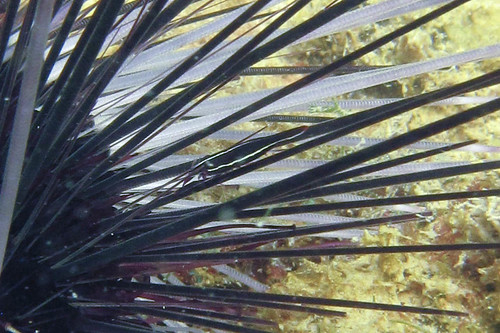
Khoo Ming Sheng, who used to volunteer as a guide with the Hantu Blog, but who unfortunately had to leave us when he was posted to work in Malaysia, Borneo, caught up with us for a dive today. He pointed out the urchin shrimp in a Diadema urchin on the reef crest. I’ve not seen one of these for a long time! There were two shrimp on this one urchin, but was impossible to get a picture of two of them together. At least, not without getting pricked by the urchin!
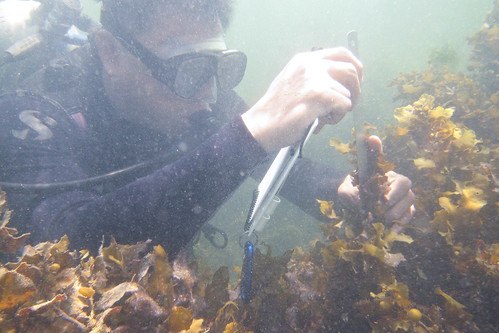
Jeffrey Low gets to work right away – finding and measuring his crops of sargassum algae along the reefs at Jong Island. Speaking of which, I found out today that “Jong” was named after ships that used to land here. Apparently, is a mispronunciation of the word “junk”. Does anyone else know anything about how Jong got its name?

Ming Sheng and I made a little detour into the deep end of Jong because the visibility was so good! On the seabed were lots of seawhips and some seafans. But unlike the deep end of Sisters Island, the whips here didn’t seem to have any commensals on them. I wonder why.

On our way back up, we came across this pair of flatworms, engaged in what is known as “penis fencing”. Since flatworms are hermaphrodites, and so mating is a little more complex. That added to the fact that they can’t see very well, and rely on chemical cues, means that the whole process is slow and long.
Once, two adult worms of the same species meet a quite crude copulation act, which can be described as hypodermic insemination, is performed. During copulation worms move towards each other, touch, then roll around together, simultaneously everting their penis papillae and stylets outward. They then try to stab each other anywhere, sometimes causing considerable damage to their partner. Worms with wounds were able to heal within 24 hours. When one animal is successful in penetrating the other, it holds on with its stylet embedded in the epidermis of its partner for several minutes. During that time, spermatozoa are injected into the partner. Phew. [1]
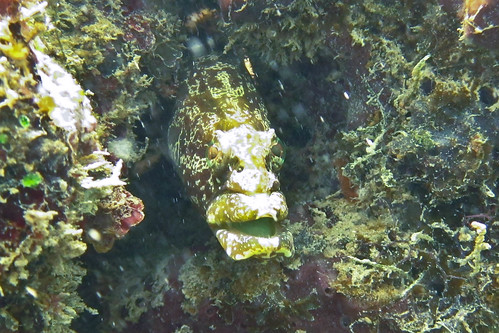
As we were rummaging through the sargassum, looking for tags left behind by Jeffrey from previous visits, we stirred up this Carpet-eel blenny.
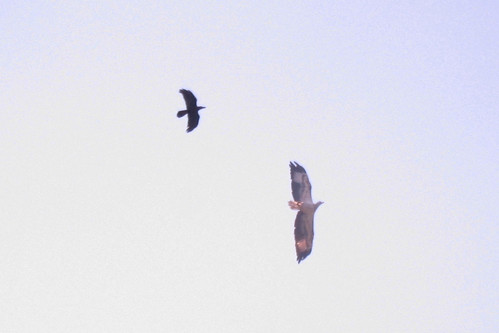
I was completely blown away when I surfaced from the dive, and just no more than 5 meters above my head, a juvenile White-bellied seaeagle was getting harassed by a Thick-billed crow. Despite the size advantage, the eagle doesn’t really want to put up a fight. There were some moments when the eagle turned its talons toward the crow, but it never really tried to grab the crow. Perhaps it was just threatening it. We floated on the water’s surface, beholding this avian acrobatic spectacle for several minutes. Eventually the crow flew off, and the young eagle began riding the thermals again.

When I looked down and straight ahead of me, I saw one magnificent Great-billed heron, standing along the beach, silhouetted against the sky. Floating on the water, I felt closer to the bird, as if we were sharing the same environment. I didn’t feel that as much when I was watching it from the boat. What a sight to wrap up a dive with!
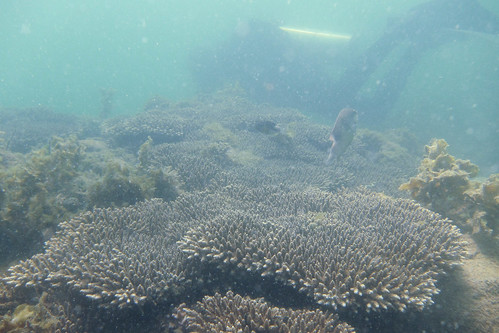
Semakau acopora coral
Once done at Jong, we headed over to Semakau Island – yes! That’s the same island our landfill is at! Before you wince, isn’t it neat that we have such a reef right next to a landfill? I can’t think of another place in the world where you can see and dive in a living reef along a landfill.
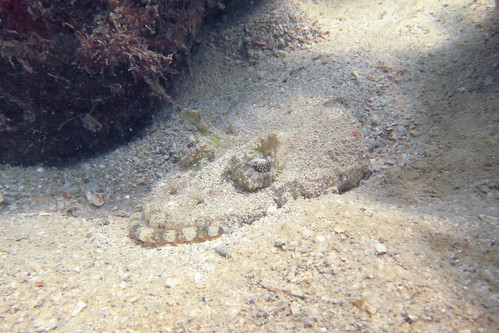
Underneath the sargassum, I found a Crocodile flathead. Look at its “eye lashes”! It looks like its got little bits of sargassum stuck onto the top of its eyes! Pretty neat camoufladge eh!?
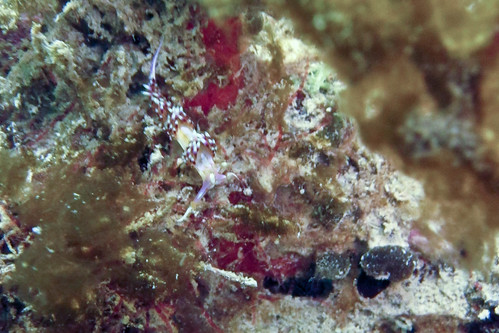
There were plenty of sea slugs and nudibranches creeping and crawling about the sargassum.
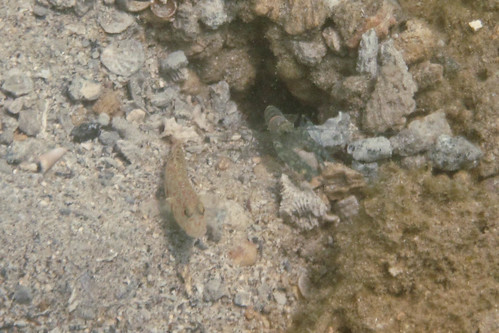
There are also lots of gobies with their shrimp buddies on Semakau’s reef flat. The shrimp are so hard at work, heaving and hauling out sediment from the burrow while the gobies stand guard. I felt bad everytime a goby shot into its burrow when it saw me, because whenever it did so, the burrow entrance with cave in a little bit, or sometimes, completely! Depending on how brutish the careless the goby was in maneuvering around and back into the burrow.

Toward the end of the second dive, I did a little wander and found a bunch of cuttlefish eggs wedged within a coral head. I went up real close to see if there were any eggs that had hatched or if there were translucent cases with the little cuttlefish within visible. As I was doing this, momma cuttlefish appeared and began inserting more eggs between the coral branches! She surely startled me! A moment later, another cuttlefish comes around, I’m thinking it was poppa cuttlefish. How amazing! I swam a little bit away and just observed the two of them going about their business. At one point, poppa cuttlefish extended his arms, squeezed his body flat and changed his colors to dark and bold stripes, and he flickered for awhile, and in an instant, he went back to looking like part of the reef. What a thrilling thing to witness, right here at home, in Singapore! I’m going to dream of cuttlefish now.
To see more pictures from this dive, visit the Hantu Blog Gallery!
 Posted in
Posted in 



 content rss
content rss
COMMENTS